The 10 best account reconciliation software in 2024
Account reconciliation can be labor-intensive.
That’s why many organizations turn to a dedicated platform to automate their processes. This helps eliminate the risk of human error, move with speed and agility, and discover inefficiencies.
But with so many options on the market, how do you pick the right account reconciliation software for you?
In this article, we’ll cover:
- What is account reconciliation software?
- Benefits of account reconciliation software
- The 10 best account reconciliation software tools for FP&A teams in 2024
- FAQs about account consolidation software
- Conclusion: choose the best account reconciliation software
By the end of this article you’ll have the information you need to make a decision on the right account reconciliation software for you and your business.
What is account reconciliation software?
Account reconciliation software allows the Office of the CFO to automate account reconciliation across multiple accounts. Using software saves hours—if not days—of manual work. Account reconciliation software automates the comparison of your records to validate accuracy or note errors or discrepancies.
Let’s dive a little deeper into account reconciliation before we cover some of the best examples of account reconciliation software.
What is account reconciliation in business?
Account reconciliation is the process of comparing your organization’s general ledger to secondary documentation to ensure its accuracy. In plain terms, it’s when you take the central system you use to track revenue and expenses and cross-reference it with receipts, invoices, and balance sheets hosted in other systems.
This process can is manual and labor-intensive, which is why organizations often turn to dedicated software—or a financial performance platform like Prophix.
Why is account reconciliation important?
Ensuring that your general ledger is accurate is the first step for many other financial processes. Month-end or year-end close, forecasting, and budgeting depend on having accurate figures for revenues, expenses, and more. But beyond being essential for these processes, regular account reconciliation brings significant advantages.
- Errors and discrepancies are discovered more quickly: The larger your organization, the higher the chance that an error slips into one of your accounts. With regular reconciliation, you can spot these before they start affecting other financial processes.
- Service interruptions are prevented: When you find reliable vendors whose prices match your budget, you need to ensure they’re paid on time. Account reconciliation can help you spot situations where a payment hasn’t made it to a vendor and rectify the situation before an invoice is past due.
- Financial reports are more accurate: No matter how much time you spend on a report, it’s only useful if the figures in it are accurate. By reconciling accounts, you can make sure that’s the case.
- Cash flow can be streamlined and optimized: A business is dependent on its cash flow, and it’s all too easy to make assumptions about where that cash is coming from (and how much of it you’re getting). Account reconciliation allows you to replace these assumptions with hard facts and find opportunities for improvement.
How do I know if I need account reconciliation software?
While most—if not all—organizations would benefit from account reconciliation software, it might not always be the most pressing software acquisition on your list.
- Recurring errors in financial statements and reports: If errors keep popping up in your statements, you may need to look into automating your account reconciliation process with the right platform.
- Time-intensive reconciliation process: With account reconciliation software, reconciling your accounts should take a few days at most. If you’re looking at a process that takes a week or more, you need dedicated software.
- Growing volume or complexity of transactions: Early in an organization’s lifetime, there may not be enough transactions to track to justify acquiring account reconciliation software. But once your volume of transactions grows too large or complex to handle manually, that software becomes necessary.
- Compliance issues: Some industries have stringent compliance requirements that make account reconciliation software essential for doing business.
Benefits of account reconciliation software
Automated reconciliation
With dedicated account reconciliation software, you can eliminate manual work by automating most of this process, meaning you can surface discrepancies faster, process multiple accounts in a fraction of the time, and get back to mission-critical tasks.
Increased visibility on financial data
Financial data is an essential asset for all departments but it’s often trapped in finance processes. Account reconciliation software can help make that data accessible to stakeholders across the organization —especially if it’s also used for other essential financial processes.
Improved risk management
With manual account reconciliation processes, the risk of human error is always present. However, the impact of an error at this stage can have far-reaching consequences, from lengthening the month-end close process to creating skewed financial reports. Using dedicated account reconciliation software can eliminate many of these risks from the get-go, making reconciliation less prone to costly errors.
The 10 best account reconciliation software tools for FP&A teams in 2024
Account reconciliation features can be found in all sorts of software, from financial performance management software to accounting solutions. That means handling these processes can look completely different for each organization. With that in mind, here are your best options for account reconciliation software.
1. Prophix
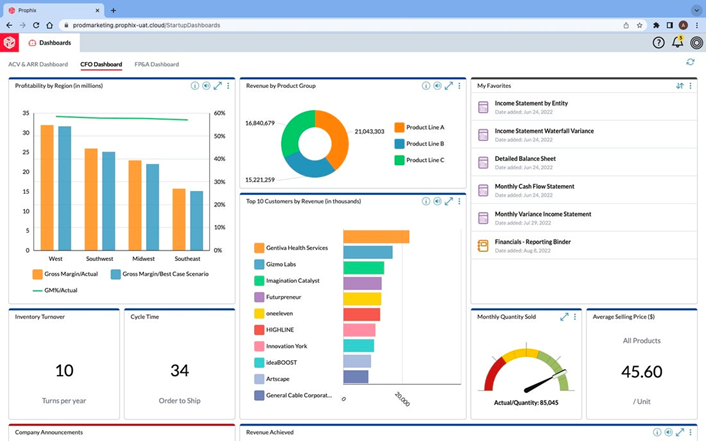
Prophix is a fully integrated Financial Performance Platform. This platform is built with collaboration in mind, and its automations allow the Office of the CFO to streamline your finance processes.
Best for: Mid-market finance teams that need to remove their finance processes from Excel and take back their workday.
Features:
- Cloud-based financial performance management
- A single unified platform for all financial data
- User-friendly interface that reduces the load on IT and maintenance teams
- Deep automations
- Customizable reporting
Pros:
- Strikes the right balance between ease of use and customizability
- Hands-on onboarding and training enable your team to get the most out of Prophix faster
- Deep, native integrations centralize data from your entire stack
- Visualizing data can be done quickly and allows stakeholders to review financials at a glance
Cons:
- Since Prophix is a full Financial Performance Platform, you’ll need some time to effectively use every part of it
Integrations:
Prophix can be integrated with almost any ERP (enterprise resource planning), HRIS (human resources information system), and CRM (customer relationship management) platform through pre-built connectors or API access.
Pricing:
Pricing varies depending on the number of users, applications, and integrations. Chat with a Prophix expert to learn more.
2. QuickBooks
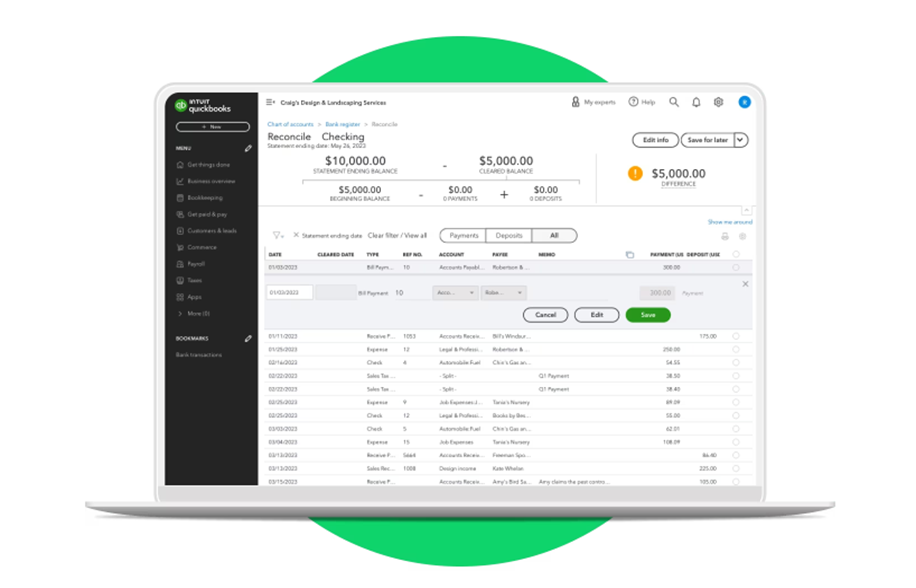
QuickBooks is one of the most popular accounting platforms for small to mid-size organizations, due to its expansive feature set and relatively low cost.
Best for: Companies who’ve just discovered their need for accounting software that also handles account reconciliation.
Features:
- All-in-one accounting solution that tracks income, maximizes tax deductions and manages payroll
- QuickBooks integrates natively with numerous banks, automating data entry
- Detailed, easy-to-use reports
- A detailed audit trail makes any sort of review process much smoother
- Custom dashboards give the Office of the CFO a glance into crucial financial data, which turns reconciled accounts into valuable insights
Pros:
- Onboarding and migration of existing financial data is quick
- Detailed transaction history, fed with data from integrated bank statements
- Automated matching makes account reconciliation much faster
Cons:
- Some QuickBooks users say the interface changes too frequently
- QuickBooks is not as customizable as other platforms on this list
- QuickBooks is more suited to small and mid-sized businesses rather than large enterprises
Integrations:
QuickBooks integrates seamlessly with all sorts of apps, from Shopify to Squarespace and spreadsheets to inventory management platforms.
Pricing:
QuickBooks offers four pricing plans:
- Simple Start, which supports one user for $30 a month
- Essentials, supporting three users for $60 a month
- Plus, giving access to five users for $90 a month
- Advanced, which is $200 a month for 25 users
Note that most features important for account reconciliation are only available with the Essentials plan and up.
QuickBooks vs. Prophix
Do you want accounting software that also doubles as an account reconciliation platform? Or do you want a dedicated financial performance platform that’s built specifically to help you close your books, reconcile accounts, and optimize every financial process your organization depends on? If you want the latter, Prophix is a better choice.
3. Sage Intacct

For many organizations, a platform like Sage Intacct is the next step up from accounting software like QuickBooks. Not only does it provide the Office of the CFO with more detailed dashboards and deeper insights, but it’s also an example of account reconciliation software. It integrates natively with over 10,000 banks to make a smoother, faster reconciliation process a reality.
Best for: Organizations of all sizes that want an all-in-one platform for account reconciliation.
Features:
- Automatically import bank statements to get a headstart on account reconciliation
- Built-in collaboration tools that allow the Office of the CFO to reconcile accounts together without external software
- Handle transactions in multiple currencies seamlessly
- Dashboards and reporting tools that allow you to keep an eye on the reconciliation process
- Flexible, customizable reconciliation workflows
Pros:
- Sage Intacct automatically matches incoming transactions, streamlining the reconciliation process
- With over 350 integrations with third-party apps, Sage Intacct users can have the data they need at their fingertips without time-intensive exports
- Sage Intacct gives users a real-time look into overall financials, which can be easily cross-referenced with supporting documentation during account reconciliation
Cons:
- Sage Intacct is not priced for small to medium-sized businesses, so these organizations will have to look elsewhere
- Platforms like Sage Intacct have a steeper learning curve than more entry-level software like QuickBooks
- While Sage Intacct is highly customizable, some users may run into the limits of that customizability
Integrations:
Sage Intacct has integrations for CRM platforms, e-commerce apps, business management software, banks, and more.
Pricing:
Sage Intacct’s price isn’t available on its website, but some sources say the yearly cost starts at $10,320.
Sage Intacct vs. Prophix
Working with historical data can be more challenging with Sage Intacct than Prophix, meaning simple errors can cause issues with account reconciliation down the line.
4. Xero

Xero’s accounting software is one of the most popular choices for managing just about any accounting process for many organizations, though it’s tailored to small and medium-sized businesses. Automated, paperless record keeping is effortless in Xero, making it a good candidate for account reconciliation.
Best for: Small and medium-sized businesses that aren’t quite satisfied with the account reconciliation features in a platform like QuickBooks.
Features:
- Xero automatically maintains an audit trail that logs all changes made to transactions
- Industry-standard automatic transaction matching gives you a head-start on reconciliation
- Generate deep, customizable reconciliation reports that allow leaders to track the progress of their account reconciliation process
- Xero’s watchlist allows users to choose and surface specific accounts they want to monitor during account reconciliation
- Automated repeating transactions can help eliminate human error, saving time on account reconciliation
Pros:
- Xero’s user-friendly interface allows even junior financial professionals to participate in account reconciliation without extensive onboarding
- Xero’s automatic imports of bank feeds and similar transactions make account reconciliation much faster
- Xero’s mobile app is one of the better examples on the market, allowing users to check in on account reconciliations on the go
Cons:
- Xero’s reports may be easy to build and export, but they lack depth for organizations with more complex needs
- Like many platforms built with small and medium-sized businesses in mind, Xero doesn’t scale well for larger organizations
- Some users have noted that Xero’s support team isn’t always the most helpful
Integrations:
Xero offers built-in integrations for essential platforms like Stripe, Shopify, and TaxCycle, but not as many as other similar platforms.
Pricing:
Xero offers three pricing plans:
- The Early plan for $15 a month
- The Growing plan at $42 a month
- The Established plan for $78 a month
Xero vs. Prophix
Xero’s focus on small and medium-sized businesses means it doesn’t scale as well for larger organizations, which is a problem you won’t have with Prophix. This dedicated Financial Performance Platform is well-suited to even the largest organizations.
5. FloQast
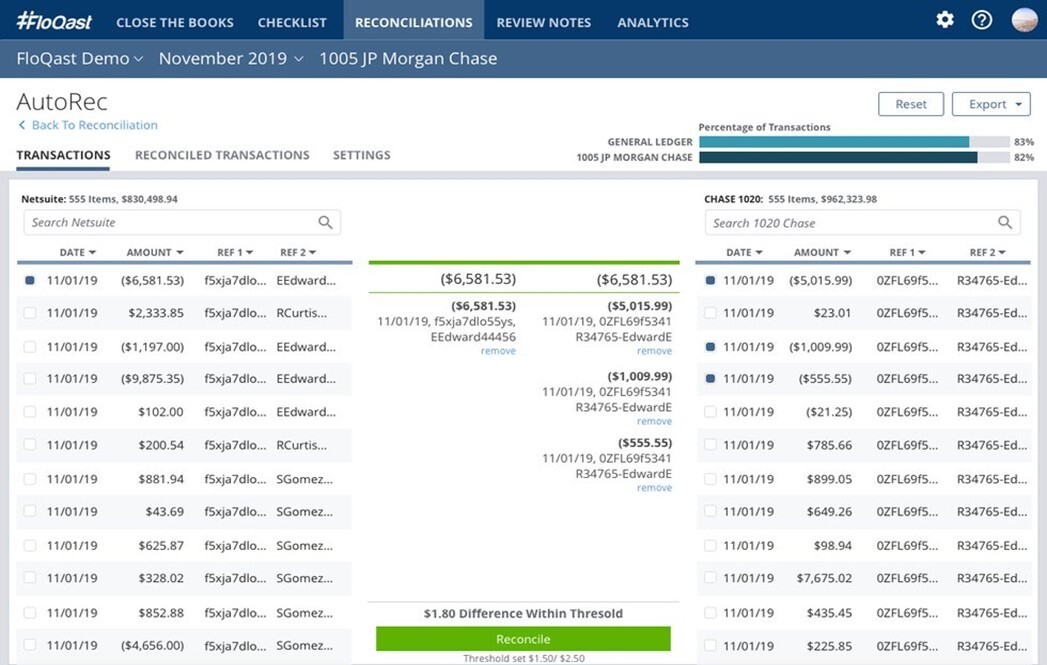
FloQast is a dedicated accounting automation platform with robust account reconciliation features. Controllers, analysts, and anyone else within the Office of the CFO can use FloQast to manage the risks associated with reconciliation, pick which processes they want to automate, and centralize all account reconciliation with a single platform.
Best for: Larger organizations ready to deploy large-scale automation to save time on account reconciliation.
Features:
- FloQast AutoRec, an AI-powered automated reconciliation solution
- Built-in task management features make it easier to delegate reconciliation work to the right parties
- Real-time reconciliation monitoring gives stakeholders an easy way to check on progress
- Version control allows simple tracking of any changes to transactions
- Pre-built templates and processes allow first-time users to onboard more quickly
Pros:
- FloQast is a robust, centralized location for all accounting reconciliation in a way not many tools on this list are
- FloQast’s collaborative workflows and task management features are top-notch
- The platform is easy to use, especially for accountants and similar roles
Cons:
- FloQast is one of the more expensive options on this list
- FloQast is specialized in reconciliation, close management, process reviews, and similar processes. It won’t function well as an FP&A (financial performance and analysis) tool
- Some users find that certain modules, like the Flux Reporting module, are more difficult to navigate and use properly
Integrations: FloQast integrates with many ERPs (including many on this list), as well as the Microsoft Suite, Slack, Dropbox, and more.
Pricing:
FloQast’s pricing isn’t available on their website. You’ll have to reach out to their sales team for a quote.
FloQast vs. Prophix
While FloQast is an excellent dedicated account reconciliation platform, it falters in other FP&A processes. You can get the same functionality from Prophix and handle other key finance processes in one platform.
6. Adra by Trintech
Adra is an example of dedicated financial close automation software and is an option for account reconciliation. It helps accounting teams improve accuracy and reduce risk during this essential process.
Best for: Small to medium-sized organizations (or smaller departments within enterprise organizations) who need a dedicated account reconciliation platform.
Features:
- Pre-built reconciliation templates make getting started a lot easier
- Built-in exception and discrepancy handling streamlines the reconciliation process
- Automated multi-way transaction matching saves time no matter how many secondary sources you’re using
- Real-time insights and analytics help the entire team identify issues early
Pros:
- Adra’s automations save tons of time for finance teams
- The platform is simple to learn and easy to use
- The interface is clear, meaning the platform doesn’t get in the way
Cons:
- The platform’s narrow focus on financial close means it’s not well-suited to other tasks
- Some users say they haven’t been able to merge data from multiple sources with this tool
- A few users have reported inconsistent experiences with customer support
Integrations: Adra’s integrations focus on ERP systems.
Pricing:
Adra’s pricing isn’t available on its website; you’ll have to get in touch with their sales team for a quote.
Adra by Trintech vs. Prophix
While Adra is a specialized solution for financial close and account reconciliation, it doesn’t scale well for larger organizations and doesn’t handle other FP&A processes. That makes Prophix a better solution for larger teams that need an all-in-one platform.
7. Multiview ERP
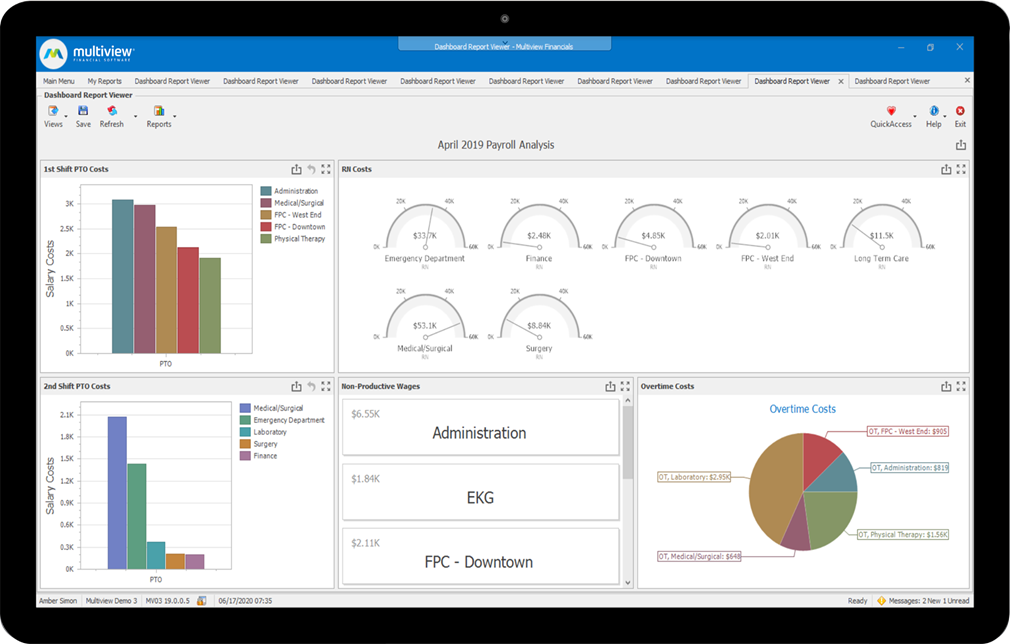
Multiview ERP is the self-proclaimed “most mature financial ERP software on the market” and the company’s mission is to “end month end.” The platform helps accounting teams unlock more efficiency in all month-end processes through automation, real-time access to data, and more.
Best for: Rapidly growing organizations with $6 million or more in annual revenue.
Features:
- Structured reconciliation workflows streamline your team’s work
- Journal entry templates can make inputting transactions easier
- Reconciliation templates help your team check things off instead of starting from scratch
- Automated transaction matching and multi-currency support
- Task management and collaborative workflows
Pros:
- Multiview ERP’s automations free up teams for work where human input is essential
- Multiview’s general ledger module is a strong starting point for other financial processes, like account reconciliation
- Implementing the tool is smooth and fast
Cons:
- Exporting data in the right format can be challenging
- Some users have noted that they don’t have a designated customer success representative, preventing them from getting the most out of the platform
- The reporting features aren’t as strong as some other platforms without customization
Integrations: Multiview ERP doesn’t have as many integrations as some other platforms, but it does integrate with Salesforce, Paylocity, EpicCare EMR, and more.
Pricing: You’ll need to get a custom quote from the team at Multiview.
Multiview ERP vs. Prophix
Multiview ERP’s limited integrations can make it tough to centralize all your data for account reconciliation. Prophix has more integrations, meaning you can see everything in one place.
8. OneStream
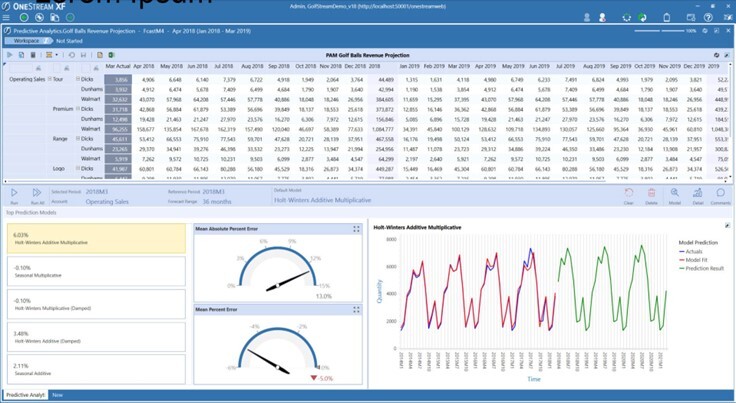
OneStream’s corporate performance management platform helps organizations make their financial processes more agile through AI-powered automation and reconciliation. It’s used by organizations like Post Holdings, OSI, and TMF Group.
Best for: Upper mid-market to enterprise-class organizations needing to streamline account reconciliation.
Features:
- Centralized collaboration and workflow automation
- Mobile accessibility for checking in on account reconciliation processes on the go
- Dashboards and data visualizations allow stakeholders to review progress at a glance
- Unified platform for financial consolidation, reporting, and reconciliation
- Automated transaction matching and reconciliation templates
Pros:
- OneStream is a fully integrated platform with innovations that put it ahead of many of its competitors
- The platform scales effectively as your organization grows
- Initial adoption is quick and easy
Cons:
- Dashboards come with a learning curve
- Requires professional implementation
- OneStream is one of the most expensive solutions on the market
Integrations: OneStream can integrate with any open GL/ERP system, including Oracle, SAP, and Microsoft Dynamics.
Pricing: While prices aren’t available on the website, some websites place the starting yearly cost at $150,000.
OneStream vs. Prophix
OneStream has a higher barrier to entry, meaning more organizations can benefit from Prophix.
9. BlackLine
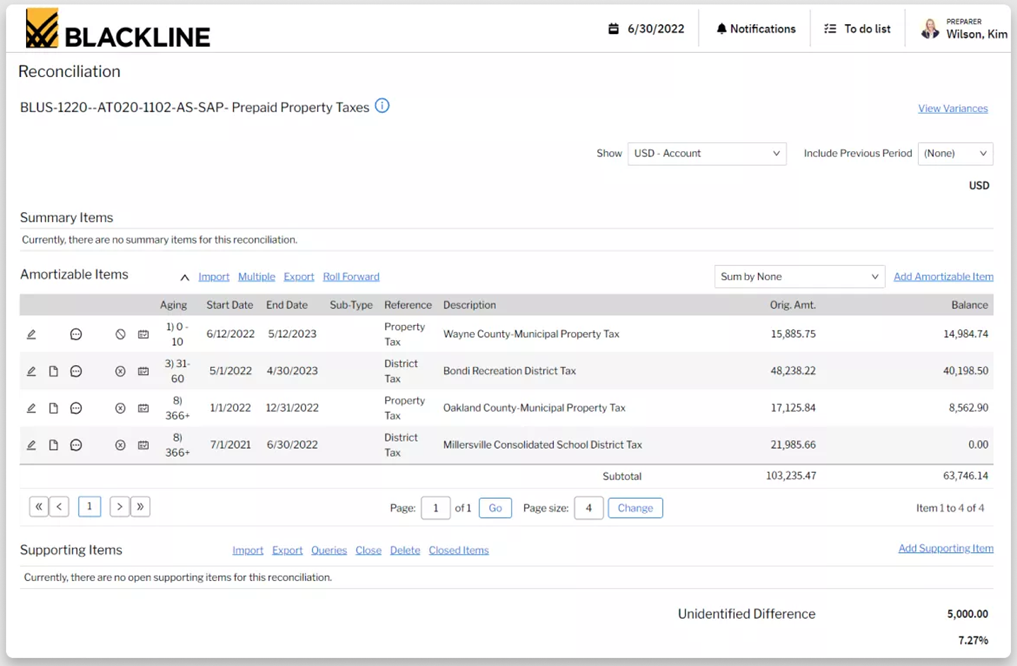
BlackLine is a comprehensive account reconciliation platform that allows teams to engage in this labor-intensive process with higher accuracy, more efficiency, and dedicated automations
Best for: Companies of all sizes that need to optimize their account reconciliation processes.
Features:
- Detailed audit trail
- Automated transaction matching
- Centralized journal entry management
- Streamlined intercompany reconciliation
- Workflow and task management
Pros:
- Powerful platform for centralizing reconciliations and journaling
- Automations and workflow management features are stronger than many other platforms
- A robust audit trail makes following reconciliations and other processes a breeze
Cons:
- Some users find the interface difficult to navigate
- Implementation can take longer for some organizations
- Limited to some types of reconciliations and transactions
Integrations: BlackLine can be integrated with any ERP system.
Pricing: You won’t find pricing information on BlackLine’s website; you’ll need to reach out to their sales team.
BlackLine vs. Prophix
While the learning curve can be rather steep for BlackLine’s interface, Prophix users can often get more out of the platform in a fraction of the time.
10. Oracle NetSuite
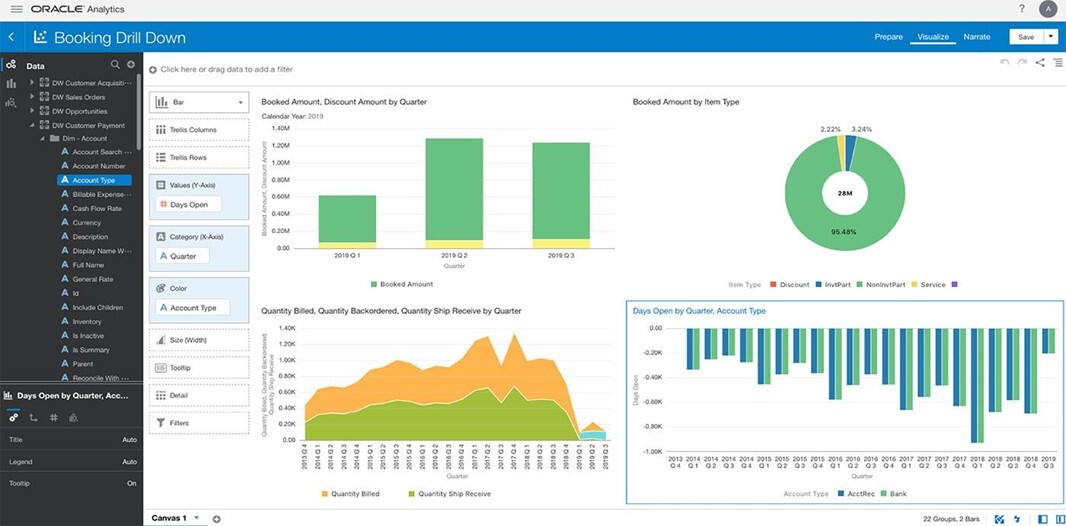
Oracle NetSuite is one of the leading cloud-based ERP platforms on the market, making it a more than viable option for account reconciliation. In fact, since many organizations are already using this software, it may be their default option for this crucial process.
Best for: Fast-growing organizations that need to automate core processes while surfacing real-time insights, including for account reconciliation.
Features:
- Built-in flexibility for all business processes
- Real-time analytics and dashboarding
- Centralized account reconciliation data
- Automated transaction matching
- Account reconciliation standardization
Pros:
- Adaptable, easy-to-use platform
- A scalable tool that grows with teams as they learn to automate more of their processes
- A powerful option for a single source of truth for both financial and non-financial data
Cons:
- Building reports can be complicated
- Because NetSuite can do so much, learning to do it all can be overwhelming
- Some users have noted that NetSuite doesn’t have the same level of support documentation or learning material that other platforms do
Integrations: NetSuite integrates natively with many e-commerce, CRM, and ERP systems.
Pricing: You’ll need to get in touch with the sales team for a quote.
Oracle NetSuite vs. Prophix
As an all-in-one cloud business management solution, Oracle NetSuite may be excessive for organizations primarily looking to optimize financial processes. For these users, Prophix will be a better choice.
FAQs about account reconciliation software
Still have some burning questions about account reconciliation software? Here are the answers.
What's the best account reconciliation software?
The best account reconciliation software is a platform that can help you automate and streamline all your financial processes. It should integrate natively with all your data sources, quickly generate essential reports, and allow you to roll out quick scenario planning on the fly.
What’s the difference between account reconciliation software and bank reconciliation software?
Bank reconciliation software is essentially account reconciliation software specifically designed for reconciling bank accounts with secondary documentation. Typically, account reconciliation software can handle all sorts of accounts, not just those you have with a bank.
Choose the best account reconciliation software
The right technology can simplify your close processes with comprehensive automation, streamlined transaction matching and minimized manual effort. The right financial performance platform makes reconciliation easier and more efficient. Learn more about choosing the right financial performance platform for you.
